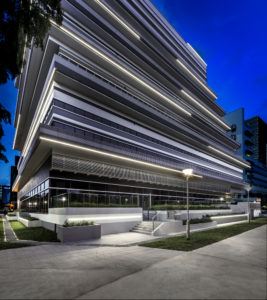
The Experience and Service Centre is all about you.
The only location in Asia, where one can try various genres of espresso machines and learn the correct and easiest way to operate them. We have carved out a small section of our warehouse and Service Centre for this purpose.
Training is free and we will love to see you there to share our knowledge.
NOTICE
Due to overwhelming demand, all new machines are sold and will not be restocked in the near future.
Before scheduling an appointment, please confirm your interest. For testing purposes, there are a few pre-owned machines listed by our customers available in the experimental room.
.
Please make an appointment before coming.
You can find the available dates and time slots below.
The experimental room is strictly for training and testing of machines with our trainer.
It is not for repairs, sales, coffee sampling or purchasing coffee beans.
APPOINTMENT REQUEST FORM
Priority will be given to first-timers.
Please do not be more than 30 minutes late, or the appointment will be cancelled.
Please note that we don’t have credit card nor cash payment facilities at the Experience and Service Centre. Orders should be made from our website. Please let us know if you need to change the appointment date or timing; do not make multiple appointments. Else the earlier requests will be cancelled.
You will be sent a confirmation email if the request form is successfully submitted.
If the appointment date is unavailable due to unforeseen reasons, we will send an email to remake another request.
Address:
Fine Coffee Company Experience and Service Centre
100 Pasir Panjang
#04-09 Singapore 118518
(By appointment only)
We are just 8 minutes walk away from Pasir Panjang or Labrador MRT.

This is what the building looks like. The car park and main lobby should be entered from the main road, do not turn into Pasir Panjang Road.
Here are some answers to FAQ.
To facilitate buyers who wish to have some immediate answers to understand more, here are some guides that can help you know more.
Question: Are the machines challenging to operate, or do I require training?
Answer:
Not at all. Once the grinder is properly calibrated, the machines are quite user-friendly. For guidance, you can reference to our Barista Guide videos or join us in the Experimental room. If you choose to purchase from us, we’ll even calibrate the grinder for you in advance to ensure a smooth start.
Question: What is the easiest way to choose the machine?
Answer:
We will suggest that you study all the features from the following page:
Choose the right espresso machine
Most important is to choose one of the three types of groupheads you prefer, then decide if you need it for heavy-duty usage.
Question: Which machine produces the best extraction?
Answer:
Among the three grouphead types – BZ, E61, and Spring Piston – the Spring Piston machines, specifically the Bezzera Strega, lead the pack. This superiority is attributed to its unique pressure reduction behavior during extraction. By doing so, it minimizes the extreme bitterness and sourness, unveiling a richer spectrum of aromas.
When comparing the E61 and BZ, they’re closely matched. However, the BZ holds a slight advantage, as its grouphead design leaves minimal space for coffee remnants to linger. Such remnants can impart stale or decaying coffee flavors to your espresso, making the BZ’s design more effective at ensuring a fresh taste.
Question: Which grouphead is more durable?
Answer:
The Spring Pistons are the most durable as they have very few components in the grouphead, and the parts can withstand much punishment. You can probably still find relic machines over 70 years old and still usable on eBay. E61s have about 25 loose parts in the grouphead that can be worn. The BZ is like a remastered version of the E61. It reduces the number of wearable parts to only five items. The BZ cut down the number of parts by introducing two mechanical components, which are pretty hardy.
To know more, please visit this page:
Choose the right espresso machine
Question: What can I learn in the Experimental room?
Answer:
In the Experimental room, you’ll be guided by our coffee specialists who boast over a decade of experience in the intricate world of coffee. They are adept in both the scientific nuances of coffee and the artful Italian espresso-making techniques.
Your learning journey will encompass:
- Basics of coffee understanding.
- Espresso crafting using our machines.
- Milk frothing techniques.
However, it’s worth noting that while we do provide foundational milk frothing training, latte art instruction isn’t part of the curriculum. Mastering latte art demands extensive time and practice and is more effectively pursued independently.
What sets our specialists apart is their commitment to efficiency and authenticity. They impart the tried-and-true Italian methods of espresso crafting, eliminating superfluous steps and ensuring you learn the most practical and effective techniques.
Question: Which machine is the easiest to clean?
Answer:
Contrary to popular belief, professional machines aren’t hard to clean. Most can be swiftly cleaned via “backflushing,” a process completed in under a minute.
While automatic machines might seem easier to clean, they often only perform a basic rinse, leaving behind residual oils and debris. On the contrary, commercial automatic coffee machines may easily require around 10 minutes just to meticulously clean their milk compartments. It’s worth noting that milk frothers are prone to attracting pests due to the residues left. Bezzera machines, however, allow for a swift 3-second clean of their milk wands.
We offer cleaning agents with each purchase, and instructional videos are available on our website. A key recommendation: use a water softener to prevent limescale buildup, a leading cause of machine issues. Not all filters soften water, so it’s essential to choose wisely.
Below is a video of backflushing with detergent. This is a little lengthier than the daily flushing with water.
Question: What should I look out for when using the machine?
Answer:
It is always important to use softened water for espresso machines; else, it can cause massive damage over the long run, requiring expensive overhauls. Water from Singapore is not soft enough.
Refer to this article: Water softening
Always be careful of hot surfaces, steam and water.
If you are using the Bezzera Strega or any lever machines, always keep your head away from the direction where the lever can bounce back.
If there is no loaded portafilter with enough coffee of the right grind size to retain water in the brew chamber. There will be no water in the chamber to form a resistance to hold back the lever, and the lever will bounce back with tremendous force upon release. Thus the user has to hold the lever and slowly release the lever back to its original position. Please be particularly careful the first time you use it, or if you notice that coffee flows out very quickly from the portafilter as it means no water is retained in the chamber. Be careful not to pull the machine at the wrong angle and topple the machine falling on you.
Question: Can you recommend a suitable machine for an environment with higher traffic?
Answer:
The best is to refer to this: Choose the right espresso machine
The Mitica TOP PID, BZ16 with a rotary pump or Strega TOP can handle the most demanding cases. They have more heavy-duty components or can directly connect to a water network.
Technically, they are the same commercial machines used in cafes, except being smaller. They are also simpler, with fewer wearable components or extensive electronics. If they can fail you, don’t expect anything else can be better.
Question: Why are Semi-Professional Espresso Machines more expensive?
Answer:
Semi-Professional Espresso Machines are a testament to exquisite craftsmanship and quality. Weighing in at over 20 kg, these devices are predominantly crafted from robust metal components, both inside and out. The intricate assembly process, due to the detailed craftsmanship, demands handwork, often taking artisans several days to perfect a single unit. Every machine undergoes individual testing before it reaches the consumer.
These aren’t just any machines; they echo the commercial-grade machines gracing cafes, albeit redesigned for a countertop. This compact version, a brainchild of the last two decades, poses its unique challenges. Fitting the same prowess in a smaller frame requires meticulous attention to detail. While the parts might be less expensive, the labor intensity amplifies, given the spatial constraints. Every Bezzera machine, for instance, is put through rigorous testing for over two hours and comes with a certification of its quality.
Insiders often argue that these compact, commercially-rated machines are a steal, considering the intensified labor and the precision required.
Beyond the initial investment, these machines are valuable assets. Their robustness and international demand ensure that their value doesn’t depreciate drastically. Rather, like many luxury items, their pricing tends to rise, roughly at a rate of 3% annually. This aligns with global inflation trends, reflecting the sheer amount of metal and craftsmanship involved. So, if cost is a concern, rest assured, your investment in one of these machines is not just for a coffee experience, but also a lasting value proposition.
Question: What’s the difference between machines sold at electro-marts with Semi-Professional Espresso Machines?
Answer:
Bezzera espresso machines are essentially commercial-grade devices adapted for smaller settings, uniquely positioned to deliver true cafe-quality espressos at homes, offices or smaller cafes.
In contrast, machines from electro-marts often operate at inconsistent pressure and heat, which is suboptimal for espresso extraction. Many employ flash heating systems, where the temperature rapidly fluctuates from low to high during extraction, greatly affecting the flavor profile. Moreover, these machines tend to have a flow rate that’s approximately four times faster than ideal, leading to under-extraction. The result isn’t genuine espresso, but rather a compromised version akin to a shorter long black.
Such inconsistencies cause many coffees made by electro-mart machines to taste remarkably similar, as their aromatic profiles are either scorched or inadequately extracted. Additionally, these machines are predominantly lightweight, relying heavily on plastic components, in stark contrast to the robust metal construction of professional machines like Bezzera’s.
Read this article to learn more about the different types of machines: The Expert’s Guide To Buying Coffee Machines
Question: Do I need a particular type of coffee beans to use these coffee machines?
Answer:
You can use any roasted pure coffee beans that are not added with any other material or objects.
You can read this article to learn more: What is the difference between coffee bean vs roasted espresso bean?
Question: Do I need a coffee grinder, or can I use ready-made coffee powder?
Answer:
It’s highly recommended to grind coffee beans just before use. Pre-ground coffee oxidizes rapidly, which compromises its freshness and flavor. Additionally, without grinding the beans yourself, you can’t ensure the correct grind size, which is crucial for a successful espresso extraction. Using ready-made coffee powder might not yield the desired espresso quality.
You can read this article to learn more: Buying coffee in whole bean or in ground powder?


